An Interview with Dr. Alan Goldhamer
By Mark Huberman
This interview originally appeared in the Winter 2016 issue of Health Science magazine, the member magazine of the National Health Association, of which interviewer Mark Huberman is the president.
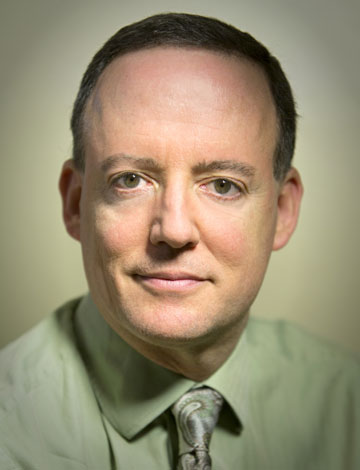 Dr. Alan Goldhamer is the founder of TrueNorth Health Center in Santa Rosa, California, which provides medical and chiropractic services, psychotherapy and counseling, and massage and body work. TrueNorth has become one of the premier training facilities for doctors wishing to gain certification in the supervision of therapeutic fasting. The British Medical Journal recently published a report by TrueNorth on the successful treatment of lymphoma cancer with fasting and a vegan, SOS-free diet. Future research is planned through the Center’s nonprofit arm, the TrueNorth Health Foundation. After completing his chiropractic education at Western States Chiropractic College in Portland, Oregon, Dr. Goldhamer became licensed as an osteopathic physician in Australia. He is the author of The Health Promoting Cookbook and co-author of The Pleasure Trap: Mastering the Hidden Force That Undermines Health & Happiness.
Dr. Alan Goldhamer is the founder of TrueNorth Health Center in Santa Rosa, California, which provides medical and chiropractic services, psychotherapy and counseling, and massage and body work. TrueNorth has become one of the premier training facilities for doctors wishing to gain certification in the supervision of therapeutic fasting. The British Medical Journal recently published a report by TrueNorth on the successful treatment of lymphoma cancer with fasting and a vegan, SOS-free diet. Future research is planned through the Center’s nonprofit arm, the TrueNorth Health Foundation. After completing his chiropractic education at Western States Chiropractic College in Portland, Oregon, Dr. Goldhamer became licensed as an osteopathic physician in Australia. He is the author of The Health Promoting Cookbook and co-author of The Pleasure Trap: Mastering the Hidden Force That Undermines Health & Happiness.
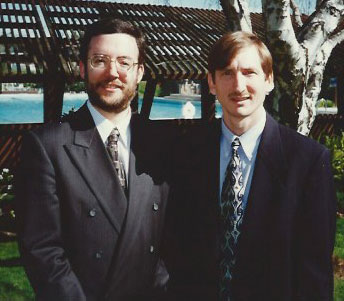 MH: Nearly everyone that discovers the hygienic way of life has a story about their journey. What is yours? Was there a health crisis? Was there a particular book that inspired you?
MH: Nearly everyone that discovers the hygienic way of life has a story about their journey. What is yours? Was there a health crisis? Was there a particular book that inspired you?
AG: Originally, my interest in health was motivated by a desire to beat Dr. Doug Lisle (pictured left) in basketball. Back in elementary school he was not yet “Dr. Lisle,” he was just Doug. Unfortunately, he adopted the same health-promoting diet as I did, and my efforts failed. He still beats me handily in basketball—but it did get me interested in improved health.
When was your first NHA/ANHS conference and what brought you there?
It was 40 years ago. I had decided to pursue a career in health care and was interested in learning more about the use of fasting.
Was there a particular speaker or NHA leader who influenced you?
I was impressed with Dr. Alec Burton and his presentations on hygienic philosophy and fasting.
What role did the NHA play in your professional development?
My exposure to the thinking of the doctors was very helpful, and I’d say even critical, in convincing Dr. Burton to allow me to come to Australia to train.
What made you want to go to chiropractic college?
The late Dr. Gerald Benesh convinced me that it was necessary to gain training as a primary care doctor in order to have the basic skills needed to properly advise patients on how to manage their health.
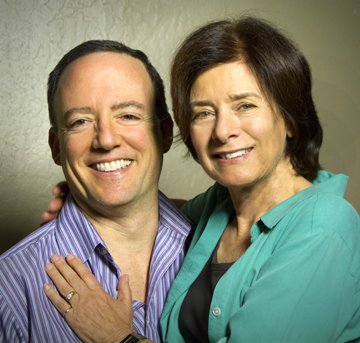 Is that where you met your wife, Dr. Jennifer Marano?
Is that where you met your wife, Dr. Jennifer Marano?
Yes. Jennifer transferred to the school I was attending, and I fell in love with her shortly thereafter! (Pictured right)
You had the extraordinary fortune of studying under the late Dr. Gerald Benesh and then under Dr. Alec Burton. Is that right?
Yes, I was incredibly fortunate. Both men were highly instrumental in my education.
What did you learn from Dr. Benesh?
Dr. Benesh taught me that the greatest threat to my ability to practice was well-intentioned but ignorant doctors and government officials.
What about Dr. Burton?
Dr. Burton taught me how to get sick people well and help healthy people stay that way.
What led you and your wife to start your first fasting institute, the Center for Conservative Therapy, in Penngrove, California, and who were your first professional colleagues?
I had the intention of starting a healthcare facility from the time I was attending high school with Dr. Lisle. He joined Jennifer and me shortly after he completed his training as a psychologist. Our first intern, and eventually first staff doctor, was Alec Isabeau, who joined us almost 30 years ago.
When did you move to your current location in Santa Rosa, California, and how did that come about?
We searched nationwide for the best place to live and set up a facility. We took many things into account, such as weather, air quality, water access, safety, access for patients, cost of property, medical-legal considerations, and acceptance of alternative medicine. The best place in the country turned out to be Santa Rosa.
Why did you change the name to the “TrueNorth Health Center”?
One of our patients who owned a very successful marketing company donated his services to help us come up with the most appropriate name for our facility. There are many directions one can travel to try to attain health, but one direction is more effective and efficient than the others: True North. This is the direction we try to guide our patients.
You have gone through a number of expansions. Tell us about the latest?
We recently gained control of five buildings adjacent to our 26,000-square- foot main facility. This allowed us to transfer most of our medical and administrative offices to these new buildings and remodel the vacated spaces into patient rooms. This has dramatically increased our capacity to our present 59 private patient rooms. We also have a dozen of our staff living in an adjacent apartment building that we have taken over.
You have an extraordinary large staff, several of whom have been with you for a very long time. Tell me about some of them.
- Dr. Doug Lisle has been with us from day one and is the principal author of The Pleasure Trap. He is an outstanding clinical psychologist and dynamic speaker, and is currently working on a new book involving the critical issue of esteem.
- Dr. Alec Isabeau has been with us 30 years, and is our sports medicine expert and is an outstanding diagnostician.
- Dr. Erwin Linzner joined us over 15 years ago, and is an excellent chiropractor and experienced fasting supervisor.
- Dr. Gracie Yuen joined us many years ago after completing her training with Dr. David Scott. She provides chiropractic services and fasting supervision.
- Dr. Peter Sultana was a medical intern while attending Case Western Medical School and has been with us ever since. He has supervised more water-only fasts than any other medical doctor.
- Dr. Michael Klaper brought his 40 years of medical experience to TrueNorth about six years ago. He supervises our intern training program, provides outstanding diagnostic acumen, and also provides phone consultation services. He also lectures throughout the country.
- Dr. Anthony Lim is our newest medical doctor. He is a graduate of Harvard Law School as well as Stanford University. In addition to fasting supervision, Dr. Lim will be taking an active role in our expanding research program.
- Dr Csilla Veress is our first naturopathic physician. Dr. Veress also provides acupuncture services and nutritional medicine, including the use of amino acid therapy in the treatment of Parkinson’s disease and other neurotransmitter-related conditions.
Tell me about some of the other non-physician staff members and what they offer?
- Becka Kelley is TrueNorth’s assistant director. She is currently in a Ph.D. program for psychology, and is most interested in the issues of patient diet and lifestyle compliance and what we can do to support a patient’s ability to stay “True North.”
- Chef Ramses Bravo and his staff provide delicious, health-promoting food that is vegan and SOS-free (free from all added sugar, including refined carbohydrates, oil and salt) His staff, including Mauricio, Patty, Johnny, Griselda, and Kristina, keep our patients and staff well fed.
- David Goldman is a registered dietician and runs our fitness training program, utilizing our newly donated fitness center.
- Randy Frary is our new facilities manager, and with our housekeeping staff, Auggie, Maria, Armando, Lorena, and Sara, keeps the facility immaculate. They also take care of our patients’ personal laundry and provide all manner of assistance.
- Our hi-tech handyman Gar takes care of plumbing, electrical, and carpentry, as well as our network services and security cameras for the facility and our patients.
- Our administrative staff, Carolyn, Graceann, Kelly, Joan, Hilary, and Laura, handle phones, scheduling, billing, and concierge services.
- We also have a wonder group of instructors, including cooking teachers Katie Mae and Cathy Fisher (the copy editor of Health Science and TrueNorth’s electronic newsletter). Yoga and relaxation instructors are Alese, Mary, and Tam.
- We also have a research staff headed by our new director of research, Toshia Myers, Ph.D., who is helping us move our research agenda forward rapidly. We have also been assisted by our consultants, Jeff Novick, R.D. and Jim Lennon, who have been instrumental in the development of our soon-to-be-launched website, fasting.org.
What is the advantage to having medical doctors on staff?
Having the best and brightest medical doctors allows us to help patients with a wide variety of challenges more effectively and efficiently, and most of all, safely.
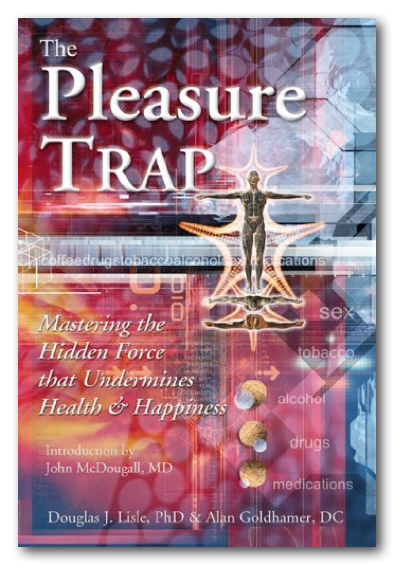 You and Dr. Lisle authored the groundbreaking book The Pleasure Trap. When did it come out and what is its premise?
You and Dr. Lisle authored the groundbreaking book The Pleasure Trap. When did it come out and what is its premise?
It was published in 2006. The book offers insights into the factors that make us susceptible to dietary and lifestyle excesses, and presents ways to restore the biological processes designed by nature to keep us running at maximum efficiency and vitality. When people eat foods that contain chemicals, mainly sugar and oil, the brain becomes artificially stimulated by dopamine secretions, which leads to overeating, obesity, and the diseases of dietary excess. The “pleasure trap” is largely why people are fat and sick, and it is an addiction that is exceedingly difficult to escape. We use fasting, in part, to help patients escape the pleasure trap.
Do you and/or Dr. Lisle have another book in the works?
Dr. Lisle is working on a new book about self-esteem that I know will be outstanding!
Perhaps one of the most unique aspects of TrueNorth is the internship opportunities that are offered to graduate students and physicians to become proficient in fasting supervision. Who is eligible, how does the program work, and how many interns do you take per year?
We are currently training about 30 doctors per year—M.D., N.D., D.C., D.O., and N.P.—in one-, three-, and twelve-month programs. Our internship/residency programs allow doctors to learn how to use nutritional medicine, including fasting, to help people get well. For many doctors this is the first time they have actually seen people recover their health. Several hundred interns have trained at TrueNorth over the years.
Why is an internship so important?
For many doctors, this is their only chance to learn how to use this approach.
Why don’t most folks who intern with you open fasting institutes of their own?
There are still major roadblocks to opening and running a facility. First, it is very expensive to develop a facility, to maintain the staff, and to attract the volume of patients needed to make it sustainable. Second, there are still medical and legal challenges to overcome. However, times are changing and new facilities may come on line in the future.
Most people probably think of TrueNorth as a fasting institute; but do people come to the center who do not fast?
In addition to medically supervised water-only fasting, or modified fasting on juices, many of our patients come to work with one or more of our doctors for assessment or treatment. Others come to take a break and get taken care of. People come to eat healthy food and be with other like-minded patients while attending lectures, cooking classes, and fitness training. Some business people also stay with us because our rates are lower than the hotels in town, and they get all their meals included.
Speaking of fasting, the most famous book ever written on the subject is unquestionably Dr. Herbert Shelton’s Fasting Can Save Your Life. Was he right, and is it really true?
He certainly was right, and it is true!
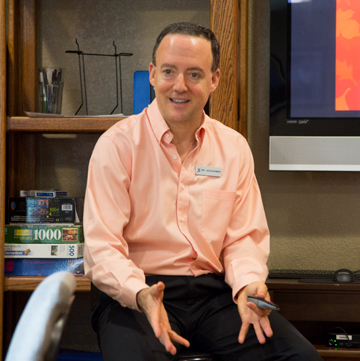 What actually happens during a fast, and why do most non-hygienists confuse fasting with starving?
What actually happens during a fast, and why do most non-hygienists confuse fasting with starving?
Fasting is the period of time after you stop eating where you live on your reserves. Starvation is the period beyond this, where you keep going and burn vital tissues, and eventually die. We promote and practice fasting, not starvation.
What about juice fasting? Can this be an alternative form of “detoxing” for people who lack the time or resources to undertake a water fast? What are its limitations?
Juicing is a form of modified eating. It may be helpful in some circumstances, but it is not fasting. Water fasting introduces a unique physiological adaptation that is quite unique. Changes occur more effectively and efficiently in water fasting then during modified approaches.
In your 31-plus years, how many patients have water fasted under your care?
Believe it or not, we have supervised the fasting of over 15,000 patients!
What conditions respond positively to fasting, and are there some conditions that simply will not respond?
The conditions caused or made worse by dietary excess respond the most consistently to medically supervised water-only fasting. They include cardiovascular disease, including high blood pressure, obesity, diabetes, and a host of autoimmune disorders. Patients who do not respond well to fasting include those with undue fear of fasting, wasting disorders (where deficiency or depletion are predominate), and conditions where kidney disease or arrhythmia might make fasting problematic. We always try to appropriately phase medications off before beginning fasting, with a few exceptions of certain replacement therapies.
I know that a particular interest and priority of yours has been documenting not only the efficacy of fasting but also its safety; you have conducted several studies attesting to both. How many studies have you conducted and what do they show?
We have a number of publications. A landmark study, “Medically Supervised Water-only Fasting in the Treatment of Hypertension,” conducted with the help of Dr. T Colin Campbell of Cornell University, involved fasting 174 consecutive patients with high blood pressure. We demonstrated the largest effects of any study ever conducted, with an average reduction of over 60 points in those patients with stage 3 hypertension. A second study of moderate-high blood pressure conducted a year later was equally impressive. We have also published case reports in peer-reviewed journals on the use of fasting to treat subacute appendicitis, which also showed impressive results.
Lots of folks within the progressive health movement talk about the benefits of a whole-foods, plant-based diet, but you are most famous, for coining the term “vegan SOS,” which stands for a vegan diet without added salt, oil or sugar? Why should we avoid these three common staples of the American diet?
I suggest reading The Pleasure Trap for a comprehensive answer to this important question. The short answer is that these chemicals artificially stimulate dopamine, leading to an addictive response which results in overeating and the development of obesity and the diseases of dietary excess.
What are your thoughts about the abundance of salt and sugar substitutes?
I do not recommend them. In addition to their own individual chemical challenges to the body, they foster an unhealthy dependence on highly adulterated foods. These processed substitutes do not facilitate “taste neuroadaptation,” meaning that as long as someone is consuming them, health-promoting foods will not taste good and so people will avoid eating them.
Are there any good oils? What about olive oil, which is so widely championed by advocates of the Mediterranean diet?
No. I do not recommend any. All oils are highly processed and concentrated food by-products. They have an unnaturally high caloric density that will result in a host of chemical challenges and, inevitably, result in overconsumption. I recommend avoiding all oils except for the engine of your car.
Flavored vinegars have become quite the rage within the whole-foods, plant-based diet world as an alternative to oil in salad dressings. Any concerns about their general use?
I prefer the flavor of the actual vegetables; but if you are able to handle these high-acid products, I suggest consuming them in moderation.
Do folks that follow a broad-spectrum, vegan, SOS-free diet need supplements? If so, which ones?
Yes. I recommend 1,000 mcg of methylcobalamin (B12) once a day. If testing indicated a deficiency that was not correctable with diet or sunshine, I would consider other supplements on an individual basis. But we always prefer to obtain our nutrients from a health-promoting vegan, SOS-free diet.
Are you an advocate of consuming organic foods whenever possible?
Yes. I believe that organically grown foods can minimize exposure to potentially harmful chemicals. Additionally, we should support farmers who use health-promoting practices, which are not only beneficial to people but also our planet.
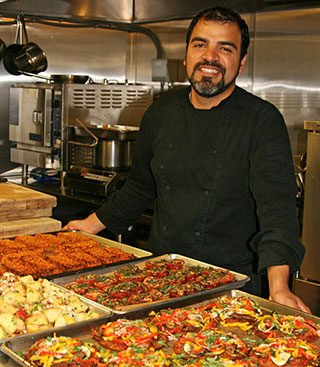 Tell me about the TrueNorth Kitchen and Chef Ramses Bravo, and how he and his culinary creations help folks stay on the straight and narrow?
Tell me about the TrueNorth Kitchen and Chef Ramses Bravo, and how he and his culinary creations help folks stay on the straight and narrow?
Not only does our outstanding chef (pictured right) provide delicious food for our patients and staff, but we also have a walk-in deli service for our patients in the community. All foods are prepared without salt, oil, and sugar.
Is it affordable to stay at TrueNorth?
TrueNorth remains remarkably affordable. Our rates for a private room with a shared bathroom start at $149 a night. This includes a private room, all fasting supervision or meals, our educational program three times a day, twice-daily visits with the doctors (during morning and evening rounds), personal laundry service, and free phone and Wi-Fi.
Will health insurance cover any of the costs?
The medical exam, personal treatments, and laboratory testing are covered by Medicare and private insurances.
You recently created the TrueNorth Foundation. What are its goals?
The TrueNorth Health Foundation is our 501(C)(3) nonprofit organization whose mission is public education and research. Our most recent paper was published by the British Medical Journal. In the case report, we detail the resolution of a patient with stage 3 follicular lymphoma (lymph cancer) who has undertaken a 21-day water-only fast followed by a vegan, SOS-free diet. You can view this article on our website at healthpromoting.com/learning-center/articles. We will also be releasing a major study on fasting safety, as well as a number of papers evaluating outcomes of data we and Dr. Scott have collected that we have analyzed. We recently formed a collaboration with Dr. Luigi Fontana and the folks at the Buck Institute, and expect to begin recruiting for a research project that will evaluate the effect of fasting in reversing biomarkers associated with aging, cancer formation, Alzheimer’s disease, autoimmune disease, and changes in the microbiome.
We have been friends and colleagues in the NHA for a very long time, and I know the reputation you enjoy (like mine) of being very strict when it comes to adherence to the natural hygiene diet? Are you as diligent as they say?
Fortunately, I eat 20 of my 21 meals a week at the TrueNorth Health Center, so there is very little opportunity for temptation. When I was 16 I decided to do an experiment, where I adopted a vegan diet and avoided any drugs and highly processed foods. I am 41 years into this experiment, and so far it seems to be working.
Finally, I know that there is much more to a healthy and productive life than diet, and I would like you to share with your readers what you and Jennifer do to keep balance in your life with all of the demands that TrueNorth imposes?
I play full-court basketball three mornings and one evening a week, and I hike with Jennifer regularly. I also do a daily meditation practice. I believe that stress is like Christmas: it is better to give then to receive, and I try to be generous!
Thanks for your years of contributions to the NHA and the Natural Hygiene health movement that it continues to lead.
Thank you, Mark, for all that you do as well.

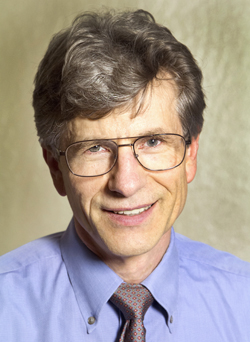 Dr. Erwin Linzner completed his undergraduate training at the California State University, Los Angeles. He then went on to graduate Magna Cum Laude and as class valedictorian from Western States Chiropractic College. Dr. Linzner worked as an accountant and computer programmer prior to becoming a doctor. In 1994 he became affiliated with the TrueNorth Health Center. Dr. Linzner understands the importance of addressing the entire individual, physical as well as emotional, in guiding his patients in their process of healing. He incorporates soft tissue manipulation in the treatment of myofascial and connective tissue disorders, and spends the time to correct joint problems in the extremities as well as the spine.
Dr. Erwin Linzner completed his undergraduate training at the California State University, Los Angeles. He then went on to graduate Magna Cum Laude and as class valedictorian from Western States Chiropractic College. Dr. Linzner worked as an accountant and computer programmer prior to becoming a doctor. In 1994 he became affiliated with the TrueNorth Health Center. Dr. Linzner understands the importance of addressing the entire individual, physical as well as emotional, in guiding his patients in their process of healing. He incorporates soft tissue manipulation in the treatment of myofascial and connective tissue disorders, and spends the time to correct joint problems in the extremities as well as the spine.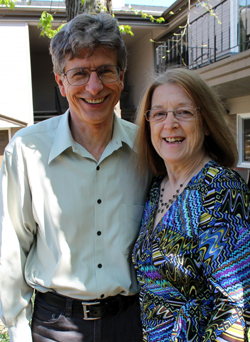 Was that eye-opening for her?
Was that eye-opening for her?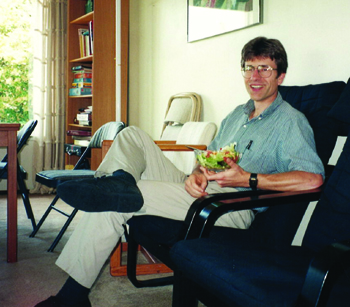 Does everyone come to TrueNorth to fast or can they just come to eat and learn?
Does everyone come to TrueNorth to fast or can they just come to eat and learn?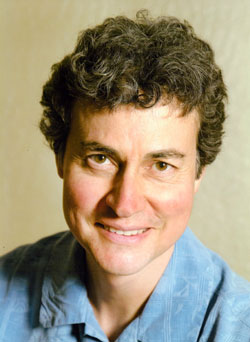 Peter Sultana, M.D. is a board-certified family physician in Santa Rosa, CA. His training includes a bachelor’s degree in Physics and Art History from Fordham University, a doctorate of Medicine from Case Western Reserve University, a diploma of specialization in Family Medicine from the University of Missouri, a certificate in Medical Aspects of Natural Family Planning from Creighton University, and a certificate in the Supervision of Therapeutic Fasting from the IAHP. He has worked in a broad spectrum of various clinical and research settings over the years, and currently runs a small family practice, and serves as a medical consultant to the participants of TrueNorth Health Center.
Peter Sultana, M.D. is a board-certified family physician in Santa Rosa, CA. His training includes a bachelor’s degree in Physics and Art History from Fordham University, a doctorate of Medicine from Case Western Reserve University, a diploma of specialization in Family Medicine from the University of Missouri, a certificate in Medical Aspects of Natural Family Planning from Creighton University, and a certificate in the Supervision of Therapeutic Fasting from the IAHP. He has worked in a broad spectrum of various clinical and research settings over the years, and currently runs a small family practice, and serves as a medical consultant to the participants of TrueNorth Health Center.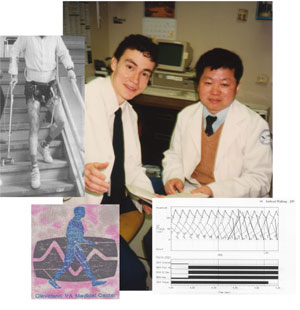 That summer, I moved back home to Cleveland and found a summer job at the Cleveland Health Education Museum. It was there that I started learning more about human biology. I worked on exhibits and taught guests about them. At the end of the summer, the job was over and I needed to find another one. Just down the road, the Cleveland VA Hospital had just posted an opening for a technician. I answered it and found myself in a research project focused on using electrical impulses controlled by computer technology to restore walking in paralyzed people (see photo at right). It was a lot of fun working with this multinational, multidisciplinary group of students, surgeons, Ph.D.s, and research subjects. The project had a great goal, but after a couple of years I found myself more interested in the lives of the human research subjects I worked with. I soon began to realize that the subjects’ mobility issues were often the least of their problems, and I was drawn into taking a more holistic view in helping them. That experience, combined with several of other storyline threads, ultimately came together at the age of 25 when I found myself being called to work as a doctor.
That summer, I moved back home to Cleveland and found a summer job at the Cleveland Health Education Museum. It was there that I started learning more about human biology. I worked on exhibits and taught guests about them. At the end of the summer, the job was over and I needed to find another one. Just down the road, the Cleveland VA Hospital had just posted an opening for a technician. I answered it and found myself in a research project focused on using electrical impulses controlled by computer technology to restore walking in paralyzed people (see photo at right). It was a lot of fun working with this multinational, multidisciplinary group of students, surgeons, Ph.D.s, and research subjects. The project had a great goal, but after a couple of years I found myself more interested in the lives of the human research subjects I worked with. I soon began to realize that the subjects’ mobility issues were often the least of their problems, and I was drawn into taking a more holistic view in helping them. That experience, combined with several of other storyline threads, ultimately came together at the age of 25 when I found myself being called to work as a doctor.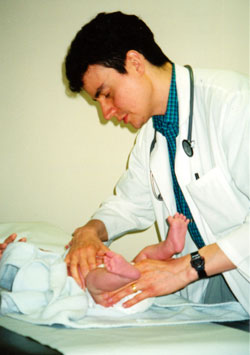 I did my residency training in Missouri. It was sort of on-the-job training. As a resident you are a licensed doctor and you are in charge of people’s medical care. My specialty was in Family Medicine, so my residency trained me for a broad range of things. It was surgery, medicine, geriatrics, intensive care, and neonatal units: the whole range of life and the whole range of diseases (see photo at right). In addition, I had my own practice in the outpatient clinics. At the end of my residency, we moved east to be closer to family. However, finding people to work with who could reinforce a truly health-promoting practice was challenging, so I gravitated more toward the West Coast.
I did my residency training in Missouri. It was sort of on-the-job training. As a resident you are a licensed doctor and you are in charge of people’s medical care. My specialty was in Family Medicine, so my residency trained me for a broad range of things. It was surgery, medicine, geriatrics, intensive care, and neonatal units: the whole range of life and the whole range of diseases (see photo at right). In addition, I had my own practice in the outpatient clinics. At the end of my residency, we moved east to be closer to family. However, finding people to work with who could reinforce a truly health-promoting practice was challenging, so I gravitated more toward the West Coast.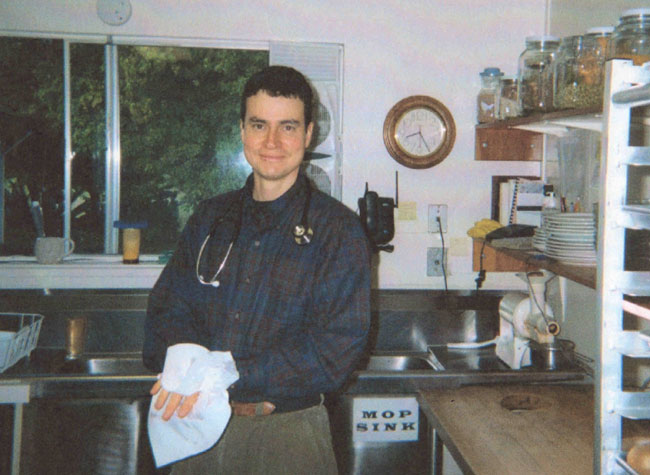 Above: Dr. Sultana in the kitchen of TrueNorth Health Center when it was located in Penngrove, CA.
Above: Dr. Sultana in the kitchen of TrueNorth Health Center when it was located in Penngrove, CA.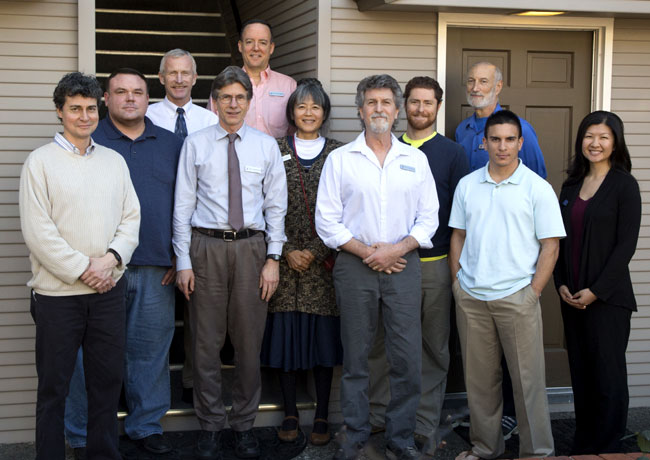 Above: Dr. Sultana in 2014, at far left, with his fellow TrueNorth clinicians in Santa Rosa, CA.
Above: Dr. Sultana in 2014, at far left, with his fellow TrueNorth clinicians in Santa Rosa, CA.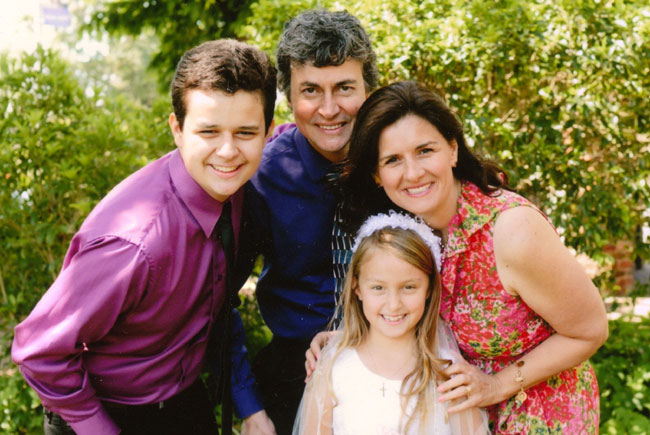 Above: Dr. Sultana with his wife and children.
Above: Dr. Sultana with his wife and children.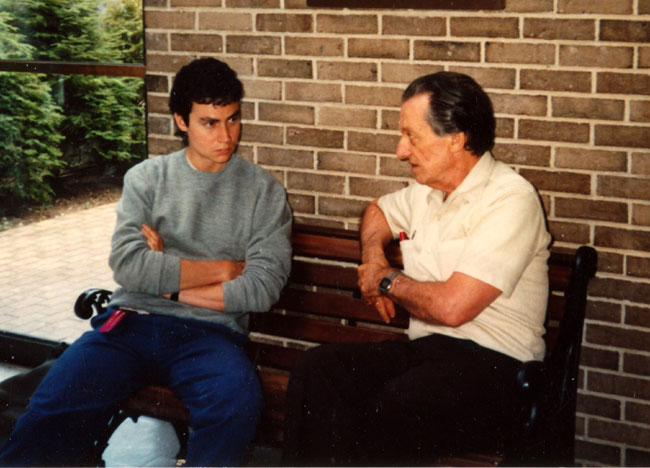 Above: Peter Sultana in his college years, chatting with Dr. D.J. Scott.
Above: Peter Sultana in his college years, chatting with Dr. D.J. Scott.